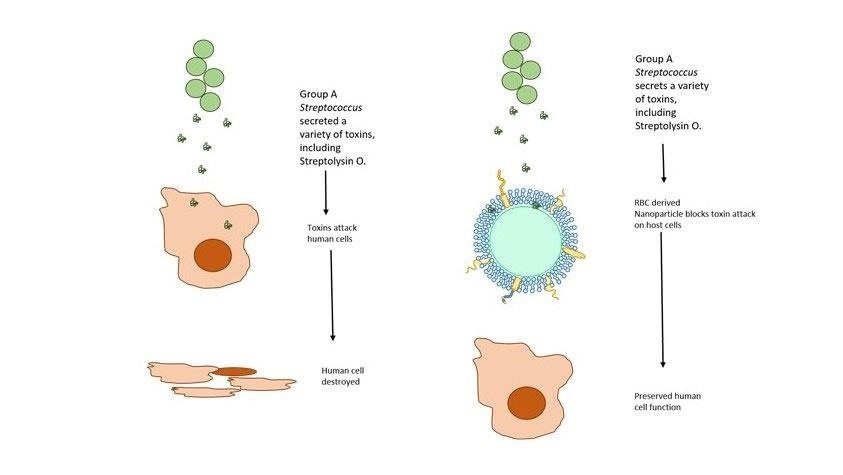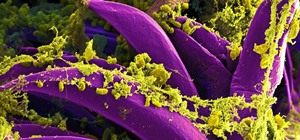It's not the bacteria itself that takes lives and limbs during invasive flesh-eating bacteria infections. It's the toxins secreted by the group A Streptococcus bacteria invading the body that causes the most damage.
Doctors can treat group A Streptococcus throat infections with antibiotics — but streptococci also live on our skin and — in rare cases — can penetrate tissues or enter the bloodstream, through a wound, cut, or break in the skin.
When strep penetrates our defenses, it can cause pneumonia, bone and joint infections, strep toxic shock syndrome, and a rare disorder called necrotizing fasciitis — a flesh-eating strep infection.
Necrotizing fasciitis infections release toxins that destroy patients' skin and tissues. Tissue death can become life-threatening and amputation is often done to try to stop the advancing infection. These rare, invasive strep infections become life-threatening because we can't stop the damage done by the toxins.
A novel technique, presented at the American Society for Pharmacology and Experimental Therapeutics annual meeting at Experimental Biology 2017 on April 24 in Chicago, employs microscopic sponge particles — nanosponges — to capture and inactivate the strep toxins released into the blood in hopes of stemming the damage.
"Our engineered nanosponges capture and inactivate the toxins produced by bacteria, thus reducing damage to cells," study researcher Tamara Escajadillo, a graduate student at the University of California San Diego, said in a press release. This treatment "has the potential to block a large family of related microbial toxins and reduce the severity of invasive bacterial infections in vulnerable patients."
Strep's Deadly Toxin
Two toxins streptococci produce, called NADase and streptolysin O, are to blame for the most severe tissue damage the produced by a flesh-eating infection.
Researchers aren't sure exactly how these toxins wreak their havoc, but scientists have shown that strep bacteria that produce these two toxins are better able to resist the body's immune defenses than bacteria that don't produce the toxin. This survival advantage may give them the ability to establish an infection, secrete their toxins, and do their damage.
Of the 10,000–15,000 cases of invasive strep disease, 500–1,500 people will develop necrotizing fasciitis, 2,000–3,000 will get strep toxic shock syndrome, and over 2,000 people will die.
Once a rampant invasive streptococcal infection develops, the toxins become the focus of the problem, but it's been a problem without a solution. That is, until now.
Stopping the Spread
To create the nanosponges, the researchers used the cell membranes of human red blood cells and engineered a core designed to absorb the toxins produced by bacteria. By shrouding the core in human cell membranes, the nanosponges look like part of the body, so they don't activate the body's defenses.

In lab experiments, done on cells in petri dishes, the nanosponges successfully stopped the toxins from reaching and killing white blood cells and skin cells.
In a second experiment, done on live animals, mice with invasive tissue infections treated with the nanosponges had smaller lesions and lower numbers of bacteria in the wound — potentially because the cells of the immune system did a better job of destroying the bacteria once the toxin was no longer inhibiting and killing cells of them.
The nanosponges in the study by Escajadillo soaked up streptolysin O, one of the worst two toxins produced by strep. If the nanosponges can soak up the toxins in people as they did in the mice in the study, we might have a chance at preventing the devastation invasive strep can cause.
These nanosponges may offer a hopeful new treatment for invasive infections caused by group A Streptococcus, the bacteria responsible for life-threatening infections such as necrotizing fasciitis (aka flesh-eating disease) — infections that progress rapidly and can't be treated with antibiotics since the damage is due to the action of toxins.
Just updated your iPhone? You'll find new emoji, enhanced security, podcast transcripts, Apple Cash virtual numbers, and other useful features. There are even new additions hidden within Safari. Find out what's new and changed on your iPhone with the iOS 17.4 update.




























Be the First to Comment
Share Your Thoughts